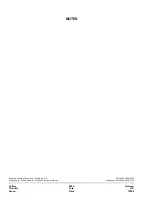
035-18549-000-B-0402
10
Unitary Products Group
Use hard drawn copper tubing where no appreciable
amount of bending around pipes or other obstructions
is necessary. Use long radius ells wherever possible
with one exception - small radius ells for the traps in all
vapor risers. If soft copper is used, care should be
taken to avoid sharp bends which may cause a restric-
tion.
Pack fiber glass insulation and a sealing material such
as permagum around refrigerant lines where they pen-
etrate a wall to reduce vibration and to retain some
flexibility.
Support all refrigerant lines at minimum intervals with
suitable hangers, brackets or clamps.
Braze all copper to copper joints with Silfos-5 or equiv-
alent brazing material. Do not use soft solder.
Insulate all vapor lines with a minimum of 1/2" ARMA-
FLEX or equal. Liquid lines exposed to direct sunlight
and/or high temperatures must also be insulated.
Never solder vapor and liquid lines together. They can
be taped together for convenience and support pur-
poses, but they must be completely insulated from
each other.
Never exceed the maximum line length listed in Table
1.
LINE SIZING
The following factors should be considered when locat-
ing the indoor and outdoor units and when sizing the
refrigerant lines for a split heat pump system. Refer to
Figure 5.
THE LIQUID LINE - The vertical rise should never
exceed 50 feet because liquid refrigerant will lose 0.5
psi of static head for each vertical foot.
The total pressure loss for a field-installed liquid line
should never exceed 40 psi because the liquid refriger-
ant could flash before it reaches the expansion valve.
This flashing will not only cause erratic valve operation
and poor system performance, but could also damage
the expansion valve.
Total pressure loss includes the static head loss
explained above plus the friction losses due to the
length of the line (Table 4) and number of fittings in the
line.
When the indoor unit is above the outdoor unit, the fric-
tion loss through the 1-1/8" OD vapor riser will be more
of a limiting factor than the loss of static head in the liq-
uid riser. See Example #3 and #4 for the VAPOR
LINE.
THE VAPOR LINE - A vapor line should not only be
sized for a friction loss of 3 psi (2°F) but also for the
proper return of oil to the compressor during both the
cooling and heating cycles.
Friction loss should always be based on cooling opera-
tion because refrigerant flow rates will be greater dur-
ing the cooling cycle than during the heating cycle.
TABLE 4: LIQUID LINES
System
Model
Refrigerant
Flow Rate,
1
(Lbs/Min)
1.
Based on Refrigerant-22 at the nominal cooling capacity of the system, a liq-
uid temperature of 105ºF and a vapor temperature of 40ºF. Since refrigerant
flow rates will be a little lower at the nominal heating capacity of each sys-
tem, liquid line friction loss should always be based on cooling operation.
Type “L”
Copper
Tubing,
(In. OD)
Pressure Drop
2
2.
These friction losses do not include any allowance for fittings.
Friction,
3
(PSI/100 Ft.)
3.
The total pressure drop of the liquid line for both friction and vertical rise
must not exceed 50 PSI. If the pressure drop exceeds 40 PSI, the liquid
refrigerant could flash before it reaches the expansion valve. This flashing
will not only cause erratic valve operation and poor system performance, but
could also damage the expansion valve.
Vertical Rise
(PSI/Ft.)
EA120/FA120
30.0
3/4
3.5
0.5
FIGURE 5 - FIELD PIPING DIAGRAMS
(Cooling/Heating Refrigerant Flow)










































